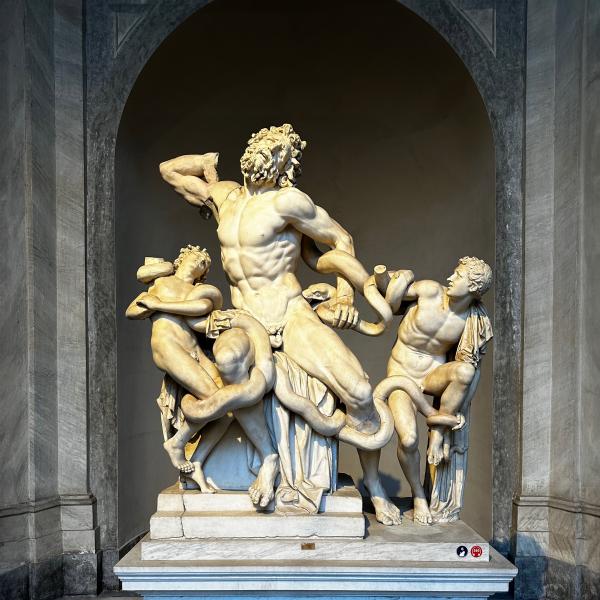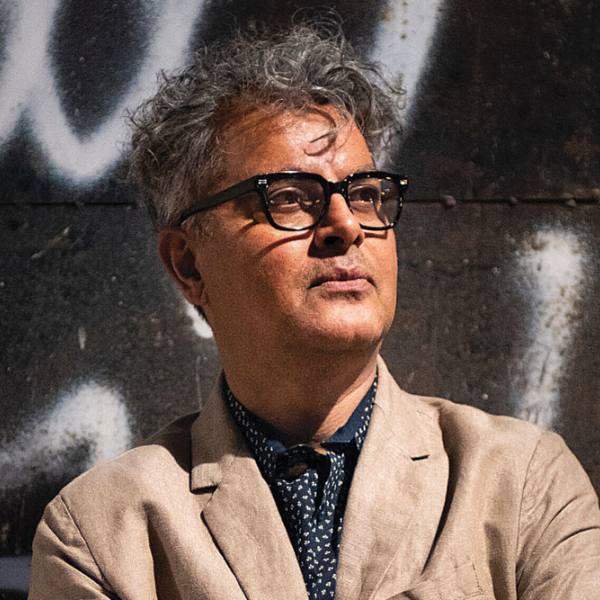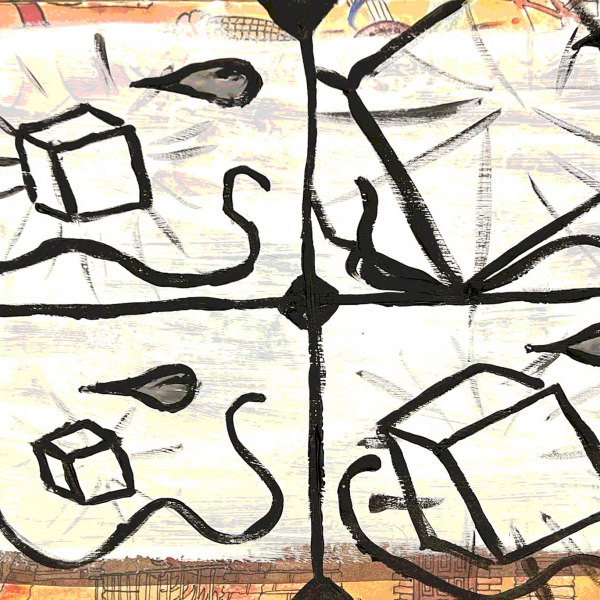Interview with FACULTY BOOK CELEBRATION SPEAKER Christiane Gruber, Associate Professor, History of Art, University of Michigan
By Elizabeth Childs
Etta and Mark Steinberg Professor of Art History
Washington University
How did you become interested in the study of Islamic art? Have you had a chance to live abroad for any significant periods while doing your scholarly work? Which are the languages you use to do your scholarship?
One afternoon when I was a junior in high school, I overheard an announcement in the hallway. The loudspeakers conveyed hard-to-decipher sounds, but I clearly heard the words “Arab world” and “summer fellowships.” At that time, I was taking an international relations class and was becoming increasingly interested in the Israeli-Palestinian conflict. I decided to gather more information from the student services office and discovered that the American Council on U.S.-Arab Relations was offering 30 summer fellowships to high school juniors to study in the Arab world. I submitted an application to the national competition and was selected as a recipient.
I spent the following summer in Tunisia learning Middle Eastern history and Arabic language as well as exploring a large swath of the country. That teenage experience proved pivotal: It marked the very beginning of my lifelong interest in Islamic language, history, religion, culture and the arts.
After high school, I pursued a degree in Islamic art history as an undergraduate at Princeton University, at which time I spent several summers studying Arabic at the American University in Cairo and Yarmouk University in Irbid, Jordan. An undergraduate internship working in the Islamic Art Department at the Metropolitan Museum of Art later spurred me to pursue a PhD in the field. I then went to graduate school at the University of Pennsylvania, where I began learning Persian and then spent a semester studying at Tehran University.
 Living, working and traveling throughout Iran proved transformative. Upon my return to Philadelphia, I decided to specialize in Persian paintings — in particular illustrated manuscripts of the Prophet Muhammad’s ascension — as the subject of my dissertation. During the last leg of my research abroad, I lived in Istanbul for a year and gathered further materials in the Ottoman palace and other museums and libraries.
Living, working and traveling throughout Iran proved transformative. Upon my return to Philadelphia, I decided to specialize in Persian paintings — in particular illustrated manuscripts of the Prophet Muhammad’s ascension — as the subject of my dissertation. During the last leg of my research abroad, I lived in Istanbul for a year and gathered further materials in the Ottoman palace and other museums and libraries.
Ever since then, and over the course of the past decade, I have lived in Istanbul every summer (and during sabbaticals). Over the past quarter century, I have traveled across the Arab, Persian and Turkish world. Since I have spent and continue to spend lengthy periods of time abroad, I frequently use Arabic, Persian and Turkish in my scholarship and day-to-day life. For me, working and living in the Islamic world form a natural component of a happy nomadic lifestyle.
Your lecture concerns the devotional images of the Prophet Muhammad in Islamic traditions. This is exciting, and yet the topic may come as a surprise to some, as there is a widespread perception that the visual representations of Muhammad are forbidden by the Koran. Clearly that is incorrect. Under what circumstances may the Prophet be represented?
Although there is a tendency to shy away from representing the Prophet Muhammad, especially in Arab lands, there does not exist a single express legal ban or decree (fatwa) prohibiting his figural representation prior to the Charlie Hebdo massacre. In fact, in Persian and Turkish lands, illustrated manuscripts and paintings depict the Prophet in a variety of ways in order to instruct viewers and readers into his biography, early Islamic history, the tenets of the Islamic faith, eschatological thought and devotional behavior.
This corpus of imagery is fascinating because it reveals fluctuating conceptualizations and visualizations of Muhammad in different times and places, thus providing a barometer of sorts for other important issues concerned with prophecy, sacrality and piety. At times, especially in medieval Persian lands, the Prophet was depicted unveiled, with his facial features fully visible, while at others, especially in Turco-Persian spheres after 1500 CE, artists added a facial veil or a flaming bundle to camouflage his traits. While some may interpret these visual strategies as prompted by an urge to “ban” figural imagery, the textual and visual record reveals a much more complex and nuanced picture, in which iconographic tactics of abstraction are linked to more spiritual tendencies to convey the secret and “unseen” mystery of the Prophet’s nature and origins.
Over the history of the Islamic faith, which are the periods in which restrictions have been most severely placed on the representation of the Prophet?
The most severe restrictions are a remarkably contemporary phenomenon, and they emerged in Saudi Arabia for the first time as a fatwa in response to the Jyllands-Posten Muhammad cartoon controversy of 2005–6. The fatwa issued in 2006 stated that satirical images — but not images writ large — of the Prophet are prohibited. This 2005–6 fatwa became even more stringent with a decree issued in response to the 2015 Charlie Hebdo massacre in Paris, in which a Saudi cleric declared that all images of Muhammad are prohibited.
The more closely we look at the evidence, the clearer it becomes: There does not exist a single fatwa prohibiting images of the Prophet until the two very recent international uproars caused by European satirical cartoons. Thus, the harshest and most unyielding restrictions have emerged in the last decade within the Wahhabi (ultra-conservative) setting of Saudi Arabia. In this regard, we must be wary to remember that these legal restrictions are in direct response to contemporary image (and ideological) conflicts on a global scale. Such decrees have only emerged in Saudi Arabia and are not universally applicable or accepted. For these reasons, images of the Prophet continue to be produced and purchased in other areas of the Islamic world, especially in Iran and Turkey, reminding us that prophetic imagery cannot be treated as a monolithic and unchanging problematic.
 How did some Muslim artists seek to enhance their faith and mystical understanding in the process of using both words and images to depict the Prophet?
How did some Muslim artists seek to enhance their faith and mystical understanding in the process of using both words and images to depict the Prophet?
Muslim artists, patrons and other individuals have cultivated their faith in many creative ways over the course of the past millennium. Oftentimes, the Prophet acts as the pivot of their devotions, because Muhammad embodies a variety of concepts, including leadership, authority, love and mercy. In oral prayers and textual sources, he is invoked as an intercessor for his community and acclaimed as the most beautiful model of humankind. Over the centuries, artists used their own “praiseworthy” methods of recalling and imagining the Prophet through the figural and representational arts, as well as through calligraphy and architecture. Images have proved particularly powerful within pedagogical and devotional contexts, as they provide the semblance of unmediated access as well as a visual fulcrum for an individual wishing to channel and focalize his pious attention upon Muhammad.
Oftentimes, the sources tell us that these images are only the beginning, and not the end, of the devotional process: Indeed, they function as optical images that must lead to “perceptions of the heart” or inner visions, which are believed to inch closer to capturing the reality of the prophetic presence, itself considered physically absent yet spiritually enduring.
What thoughts do you have about the tragic events in Paris a year ago, when political caricaturists at the journal Charlie Hebdo were the victims of a fatal assault by terrorists?
The massacre at Charlie Hebdo was devastating in countless ways. Besides the terrible loss of life, I fear that the historical evidence — that is, Islamic images of Muhammad — has come under grave threat as well. This threat is not only due to physically violent terrorism but through reactionary, knee-jerk responses that seek to explicate the root reasons for the attack in the first place. To my mind, the offices of Charlie Hebdo provided a soft target, a proxy war ground in which ISIS militants were able to operate and exact damage.
Unfortunately, explaining that the root cause of the attack stems from an ostensible “ban” on Islamic images of the Prophet, especially disrespectful ones, skirts much larger social, cultural, religious and political issues. If we are to pin our explanations on the problematic of imagery, then we not only overlook deeper problems but we also give credence to flawed, and often neo-conservative and reactionary, discourses on images of the Prophet in Islamic traditions. In addition, if we are to uncritically propagate the notion of a “ban” and ignore historical Islamic images of the Prophet, then we must admit to our own complicity in censoring, or, worse, endangering the historical data. This problematic holds true not only for images but also for broader discourses on Islam today, which have become increasingly trenchant and divisive at an alarming speed. It is important to tackle such narratives with an attention to verifiable data and with a moral use of language, as well as to disallow fear-mongering ideology to trump inquiry based on robust and sound evidence.
Your lecture draws from your book “The Praiseworthy One: The Prophet Muhammad in Islamic Texts and Images,” to be published [with 130 full-page color images] in 2017. What is your next project?
In my next project, I am also aiming for both a general and specialist audience. The book I’m now writing is entitled “Gezi Graffiti: The Visual Culture of Resistance in Contemporary Turkey.” Deploying an activist form of interdisciplinary scholarship, this project examines the visual, material and performative aspects of the Turkish Gezi Movement, which burst out in Turkey during summer 2013 (and which continues to be active today). I, myself, was based in Istanbul and took part in the demonstrations, photographing the street art, graffiti, tented occupation, martyrial practices and much more. My archive of about 3,000 photos thus provides a large and fascinating corpus of documentation that helps us explore how political dissent is enacted and given form through the expressive arts in the Middle East today. While vastly divergent in their materials and themes, these two ongoing book projects — one on Islamic devotional images of the Prophet and the other on the contemporary Turkish visual culture of conflict — are nevertheless bound and underpinned by one common question: namely, how individuals in Muslim-majority countries use the creative arts to imagine and commune with the sacred and to communicate a sense of identity in their crafting of life-worlds that are imbued with much beauty and plenty of pain, as befits the human condition.
"The Praiseworthy One: Devotional Images of the Prophet Muhammad in Islamic Traditions"
Christiane Gruber, Associate Professor, History of Art, University of Michigan
FACULTY BOOK CELEBRATION
February 11, 4 pm
Umrath Lounge
RSVPs appreciated; please click here
Christiane Gruber discusses a number of paintings of the Prophet Muhammad produced in Persian and Turkish lands from the 14th century to the modern day. Ranging from veristic to abstract, these images represent Muhammad’s individual traits, primordial luminosity, and veiled essence. Their pictorial motifs reveal that artists engaged in abstract thought and turned to symbolic motifs in order to imagine Muhammad’s primordial origins and prophetic standing. Artists and viewers alike also were inspired by various mystical beliefs and practices, in the process seeking to express piety through both verbal and pictorial language. Within a variety of Islamic expressive cultures, paintings thus function as a powerful means (among many) for devotional engagement with Muhammad, the “praiseworthy” Prophet and Messenger of Islam.
Two additional speakers will give short presentations on their most recent books:
Catherine Keane, Associate Professor of Classics
Juvenal and the Satiric Emotions (Oxford, 2015)
Zhao Ma, Assistant Professor of Modern Chinese History and Culture
Runaway Wives, Urban Crimes, and Survival Tactics in Wartime Beijing, 1937–1949 (Harvard University Press, 2015)
+ + + + RELATED EVENT + + + +
“The Book as Artifact”
Panel Discussion
Featuring Faculty Book Celebration speaker Christiane Gruber, Robert Hegel (East Asian Languages & Cultures) and Ken Botnick (Kranzberg Studio for the Illustrated Book); moderated by Nancy Berg (Jewish, Islamic and Near Eastern Languages and Cultures)
Thursday, February 11, 11:30 am–1 pm
Washington University, Umrath Hall, Umrath Lounge
Co-sponsored by University Libraries
Please RSVP to attend: cenhum@artsci.wustl.edu




